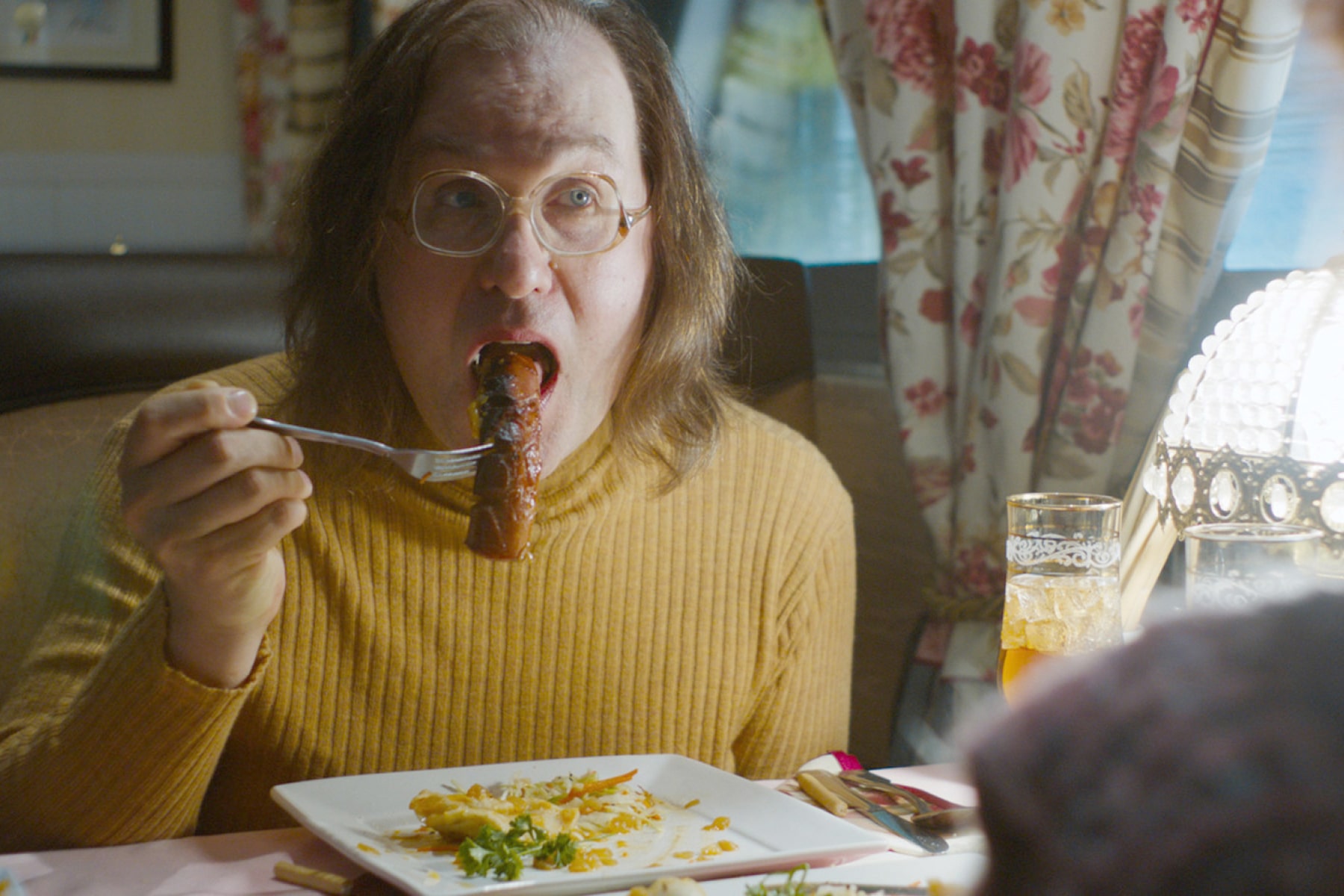
The Greasy Strangler
“Bullshit artist!”
“Bullshit artist!”
“You’re a bullshit artist!”
“Bull-SHIT! Art-IST!”
“I call bullshit on that.”
“You’re a horse shit artist.”
“I call horse shit. You’re covered in horseshit.”
“B.U.L.L.S.H.I.T A.R.T.I.S.T. Bullshit Artist!”
“You’re the world’s biggest bullshit AND horseshit artist!”
This is some of the dialogue from a movie that is nearly impossible to describe. It goes on like this for almost 5 minutes, and there are similar scenes that defy logic in how long and repetitive they become. The film is garbage in the most beautiful way.
For almost 90 minutes, you wade through unending flashes of fake dongs that strain against inappropriately cut disco attire, enlarged scrotums that look like they were spawned from the nightmarish imagination of Matthew Barney, oversized pubic bushes that resemble fake afro wigs glued to the crotch, and copious amounts of grease trap fat – viscous and filthy –in which both food and people are submerged.
The film is disgusting and irreverent, but still fascinatingly entertaining. One look at Jim Hoskins, the director, kinda says it all. His image should accompany the dictionary definition of disturbed creep with a sex problem. He’s like Tim and Eric meets Quentin Dupieux (director of “Rubber”).
In one scene, three men stand by a motel vending machine, discussing their frustration over how a bag of paprika potato chips is lodged against the spiral dispenser. They are not significant characters, having just come from a disco tour (given by our protagonists) in which they demanded free drinks that were offered in the tour’s brochure. This infuriates the father, who abruptly ends the tour and, subsequently, the scene.
Here’s the scene that follows, as they stand at the vending machine: one of the men asks what the chips are made of, to which another man quickly replies “POtaTO,” making the syllables indistinguishable and the word unintelligible through his heavy Indian accent. The listener asks him to repeat the word over and over and over again, yet the Indian man enunciates it in exactly the same way each time.
There is a volley of question and predictable, nonsensical response – like an elaborate Meisner exercise of repetition. The scene mounts to a crescendo whereby no true resolve occurs, then it dramatically switches gears as the third man says, “I think he’s trying to say “poTAto.” The scene wraps up, as though the exchange never happened. This trend of nonsensical volley is repeated throughout film (as indicated at the very beginning of this review).
While on the subject of Meisner, I feel compelled to talk about the acting. A little research reveals that the cast was initially unwilling to participate in the film. They were so turned off by the script – and I’m not surprised – because it reads like gibberish. The language and character interactions are terribly forced and overly self-aware. The film reads like the worst kind of student film – one whose creator possesses the perfect storm of incredible stupidity with an overinflated ego, both of which obfuscate their ineptitude (there’s a name for this condition, known as the Dunning-Kruger effect).
Yet, because of the unwavering commitment of the acting talent, it totally works. They are transformed from a stilted troupe of Tommy-Wiseau-level amateurs to fascinating personae that keep you engaged. The horrendously delivered dialogue actually pulls you closer to them, not further away. This film works BECAUSE of the actors; it required their complete trust in the vision and their commitment to flawless execution.
There’s a scene where the father character exits a building wearing his signature disco outfit (fake penis exposed and all) and a spotlight flashes on him against a blank brick wall. He immediately begins a dance routine as the spotlight tracks alongside his lateral movements – à la Gene Kelly in “Singing in the Rain.” The spotlight suddenly cuts power, and the father resumes his normal walk off-screen in the darkness. There is NO overt motivation or explanation behind breaking the fourth wall in this way, yet it was important enough to elaborately draw attention to behind-the-scenes production elements.
The music is intriguing, like Kavinsky trying to craft a soundtrack for a Super Mario Bros 3 reboot. I can’t call it good because of its use, often set as a leitmotif that signifies a character shift into an altered state of mind. It grates on the nerves, enforcing an atmosphere of confusion and restlessness.
Of the thousands of films I’ve seen, this stands out as the most intentionally bizarre. There is an unbroken focus in its approach and directorial vision that warrants some level of respect – even though it often feels like unnecessary work to get the creative team where they want to go.
In the end, the film does touch on some relatively beautiful, touching points about passing the baton of family values and the nature of complex familial relationships, but first trudges through gallons of shit to get there. It’s doubtful they needed to go through the shit at all, but that’s partly what keeps you engaged – tirelessly investigating the purpose of and motive behind what unfolds onscreen.
You need to go to this film, but not because I think you’ll enjoy it. You may, in fact, loathe it. But it’s an experience you’ve never had and one you will likely never have again.